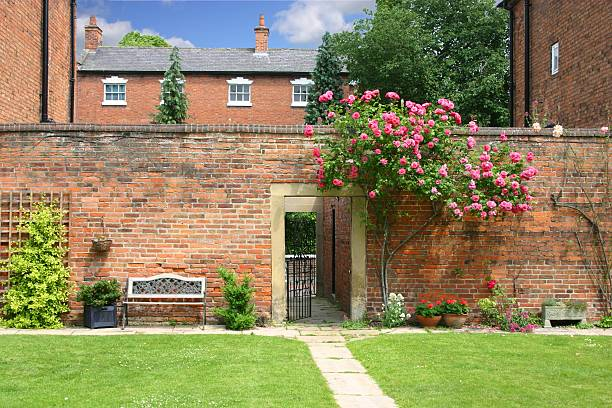When it comes to construction, a solid foundation is essential for structural integrity and longevity. The foundation is the support system, ensuring stability and preventing structural damage. It forms the base upon which the entire structure is built, making it a critical component of any construction project.
Rendering and Plastering are two popular techniques used in the construction industry to enhance the appearance and protect the surface of walls. While both methods serve similar purposes, there is an ongoing debate about which suits different circumstances. This article aims to unravel the discussion between rendering and plastering, shedding light on each method’s similarities, differences, and considerations.
This article aims to provide readers with a comprehensive understanding of renderings vs plastering in construction. By exploring these techniques’ definitions, purposes, and benefits, readers will gain insight into which method may be best suited for their specific needs. Additionally, this article aims to help readers make informed decisions when choosing between rendering and plastering for their construction projects!
Understanding Rendering and Plastering
Definition and Purpose of Rendering
Rendering refers to applying a mixture of cement, sand, and sometimes other additives, known as render, onto the exterior or interior walls. The primary purpose of Rendering is to create a protective and aesthetically pleasing layer that enhances the walls’ durability, weather resistance, and appearance. Depending on the desired look, the render can be applied in various finishes, such as smooth, textured, or patterned.
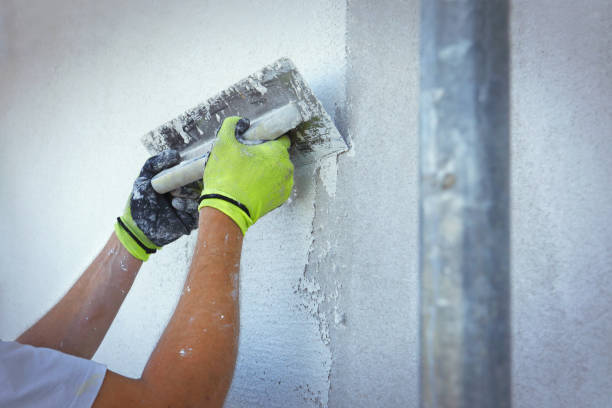
Definition and Purpose of Plastering
Plastering is the process of application of a mixture called plaster, made from materials like gypsum, lime, or cement, onto the interior plaster walls and ceilings. The primary purpose of Plastering is to create a smooth and even surface, hiding any imperfections and providing a suitable base for paint or other finishes. Plaster can be applied in different thicknesses and textures, allowing for customization according to the desired aesthetic.
Understanding Rendering and Plastering is crucial for making informed decisions in the construction process. Plastering creates a smooth and flawless finish on the interior surfaces whereas rendering provides durability, weather resistance, and aesthetic appeal to the exterior or interior walls. Both techniques have distinct benefits, which will be further explored in the following sections.
Differences Between Rendering and Plastering
Materials Used
When it comes to Rendering and Plastering, the materials used play a significant role in determining the properties and characteristics of the final finish.
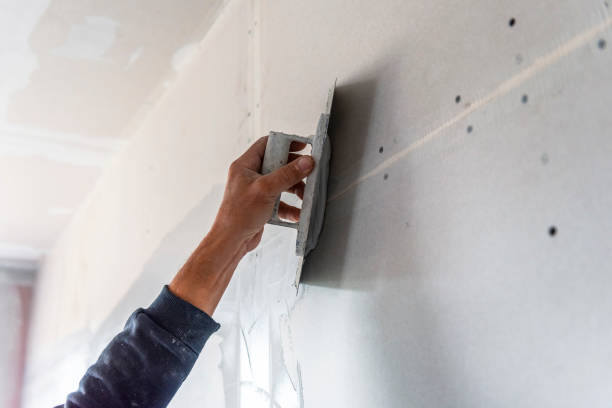
Composition of Render
Render typically consists of a mixture of cement, sand, and sometimes additional additives like lime or acrylic polymers. The specific design may vary depending on the desired properties and application requirements.
The blend of these materials provides render with its strength, durability, and weather resistance.
Composition of Plaster
Plaster, on the other hand, is made from materials such as gypsum, lime, or cement. It may also include aggregates like sand or fibres for added strength and flexibility. The composition of plaster varies based on its intended use, with different formulations suitable for wall applications, ceiling applications, or decorative purposes.
Application Techniques
Rendering and Plastering differ in their application techniques, which affect the overall process and final result. Rendering involves applying the rendered mixture onto the surface using tools like trowels or floats. The mixture is spread evenly over the wall, creating a consistent layer of protection like a coating.
Depending on the desired finish, the render may be textured, smoothed, or patterned during application.
Process of Plastering
Plastering follows a similar application process but is typically focused on interior surfaces. The plaster mixture is applied using trowels, and the plasterer works to create a smooth and even surface. A number of layers of plaster may be applied, with each layer being allowed to dry before the next one is added.
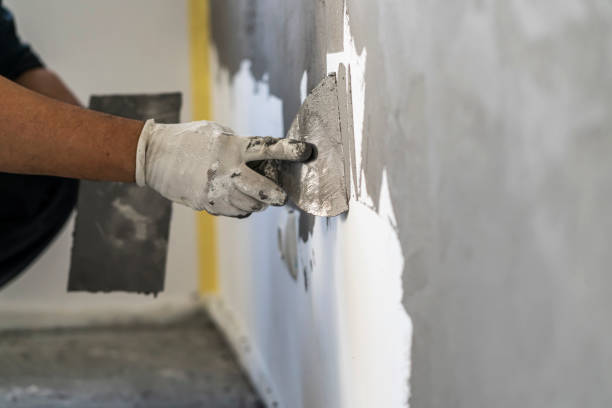
Finishing Options
While both rendering and plastering offer various finishing options, there are differences in the available choices for each technique. Finishes available for render Render can be finished in multiple ways to achieve different textures and appearances. Some standard finishes include smooth, stippled, textured, or even decorative finishes like pebble dash or ashlar cut.
These finishes allow for various design possibilities and can be customized to suit the architectural style or personal preference. Finishes available for plaster Plastering also allows for different finishes, but they are primarily focused on achieving a smooth finish and flawless surface. The finished plaster can be left as is for a simple and elegant look, or it can be painted, wallpapered, or decorated in various ways. The application offers versatility in final decorative touches, allowing for customization based on individual preferences.
Understanding the differences in materials, application techniques, and finishing options between Rendering and Plastering is essential for choosing the most suitable approach for your construction project. Whether you prioritize waterproofing and fireproofing, aesthetics or ease of maintenance, considering these distinctions will help you make an informed decision.
Pros and Cons of Rendering
Advantages of Rendering
Rendering offers several advantages that make it a popular choice in construction projects.
Increased Weather Resistance
Render provides additional protection against harsh weather conditions such as rain, wind, and UV rays. It acts as a barrier, preventing moisture penetration and reducing the risk of structural damage caused by water seepage. This increased protection also provides waterproofing and fireproofing contributing to the longevity of the building.
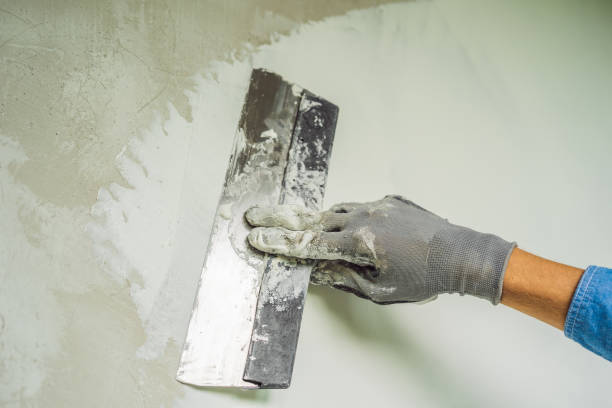
Enhanced Aesthetics
Render allows for a wide range of finishes and textures, giving buildings a visually appealing and modern appearance. Whether it’s a smooth and sleek finish or a textured and patterned look, render offers versatility in achieving the desired aesthetics giving the coat its creamy appearance and smooth finish. It can be customized to match various architectural styles and personal preferences.
Disadvantages of Rendering
Despite its benefits, Rendering does have some drawbacks that should be considered.
Higher Cost
Rendering can be more expensive than other wall finishing options. The materials used, such as cement and additives, as well as the labour involved in the application process, contribute to the higher overall cost. This cost factor must be considered when budgeting for a construction or renovation project.
Potential for Cracking
Over time, render may develop hairline cracks due to building movement, temperature changes, or inadequate preparation of the underlying surface or if wall rendering is not allowed to dry before walls are painted. While these cracks are typically superficial and do not affect the structural integrity, they can impact the aesthetic appeal. Regular maintenance and repairs may be required to address any cracking issues.
Pros and Cons of Plastering
Advantages of Plastering
Plastering offers its advantages, making it a viable choice in certain situations.
Versatility in Design Options
Plastering allows for a more excellent range of design options and decorative finishes than Rendering. It can be shaped, moulded, or textured to create unique patterns or architectural details. This versatility gives homeowners and designers more flexibility in achieving specific design visions or customized looks.
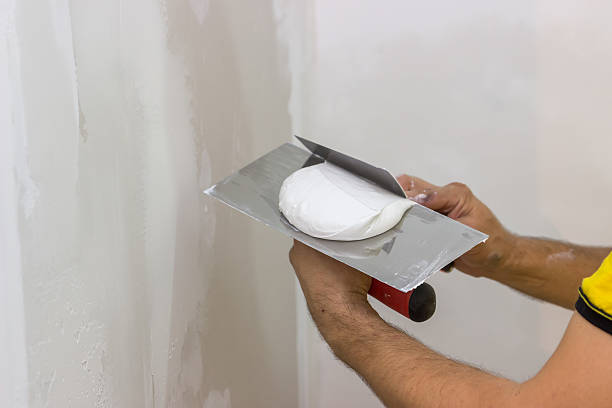
Lower Cost Compared to Rendering
Plastering is generally more cost-effective than rendering, making it a preferred choice for those working within a tighter budget. This is because less cement is used. The materials used in Plastering, such as gypsum or lime, tend to be less expensive compared to the cement-based render mixtures. This cost advantage can make plastering an attractive option for residential and commercial projects.
Disadvantages of Plastering
While Plastering has its advantages, there are some potential drawbacks to consider.
Limited Weather Resistance
Unlike render, Plastering is primarily designed for interior surfaces and may not offer the same level of weather resistance. Plaster is more susceptible to damage from moisture, humidity, and extreme temperature variations. Therefore, Plastering may not be suitable for being used to coat exterior surfaces of buildings. Surfaces of buildings contain a higher percentage of prone areas to excessive moisture exposure.
Susceptibility to Moisture Damage
Plaster is more vulnerable to moisture-related issues like mould growth or water damage. Plaster can deteriorate and require repairs or replacement if not adequately maintained or in areas with high humidity if not allowed to be set and completely dry. Adequate ventilation and moisture control measures are necessary to mitigate these risks. Considering the pros and cons of Rendering and Plastering will help make an informed decision based on the project’s specific requirements, budget constraints, and environmental factors while making the outside facade more visually appealing.
Factors to Consider in Choosing Between Rendering and Plastering
When deciding between rendering and plastering for your construction project, it’s essential to consider several factors that can influence the suitability of each technique.
Climate and Environmental Conditions
The climate and environmental conditions of the building’s location should be considered. If the area is prone to heavy rainfall, strong winds, or extreme temperature variations, Rendering may be a more suitable choice due to its enhanced weather resistance. Lime gypsum is key to giving the coating applied to the outside drying time and strong, weather-resistant walls. Conversely, Plastering may be better suited for interior applications or areas with more moderate environmental conditions.
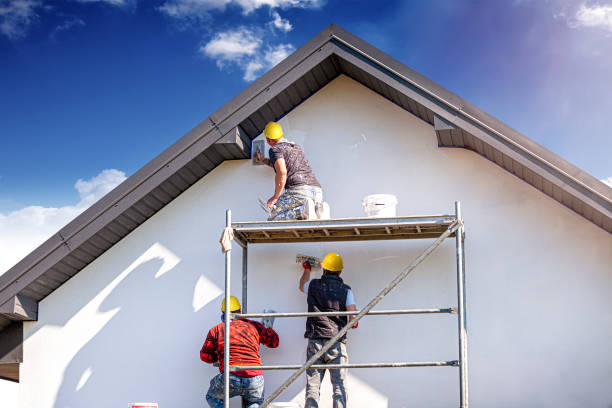
Desired Aesthetics and Architectural Style
Consider the desired aesthetics and architectural style of the building. Rendering makes walls as smooth as possible, offering various finishes and textures, making it suitable for achieving contemporary or modern designs. With its versatility in design options, plastering lends itself well to creating intricate details or traditional architectural styles. Choosing the technique that aligns with your personal preference and the requirements of your project will contribute to the overall aesthetic success of the freshly plastered walls!
Long-term Maintenance and Durability Requirements
Evaluate the long-term maintenance and durability requirements of the project. Rendering provides an added layer of protection and durability, which can reduce the need for frequent maintenance and repairs. However, if the building requires periodic modifications or renovations ranging from a week to a month, Plastering may offer greater flexibility due to its ease of change. Consider the anticipated maintenance needs and the expected lifespan of the finish to make an informed decision.
Key Takeaways
- Rendering involves applying cement, sand, and additives for durability, while plastering utilizes gypsum, lime, or cement for creating smooth interior surfaces, each method utilizing distinct materials and techniques for specific purposes.
- Rendering offers heightened weather resistance and diverse aesthetic options but comes with a higher cost and potential vulnerability to cracking.
- Plastering provides design versatility at a lower cost compared to rendering but lacks significant weather resistance and can be susceptible to moisture damage.
The Bottom Line
Rendering and Plastering are two distinct techniques used in construction, each with its advantages and considerations. Rendering refers to the process of applying a mixture of cement, sand, and additives onto walls to enhance weather resistance and provide aesthetic appeal. Conversely, Plastering refers to coating and focuses on creating smooth and even surfaces using materials like gypsum or lime.
When choosing between Rendering and Plastering, it’s essential to consider factors such as climate and environmental conditions, desired aesthetics, and long-term maintenance requirements. Understanding the specific needs and goals of the project will help determine which technique is better suited for the job.
Consulting with professionals, such as architects or contractors, is crucial in making an informed decision. They can provide expert advice based on their knowledge and experience, considering your construction project’s unique aspects. Their insights can help you navigate the complexities and ensure the chosen technique meets your requirements. By carefully considering these factors and seeking professional guidance, you can confidently choose between rendering and plastering to achieve a successful and visually appealing outcome for your construction project.



